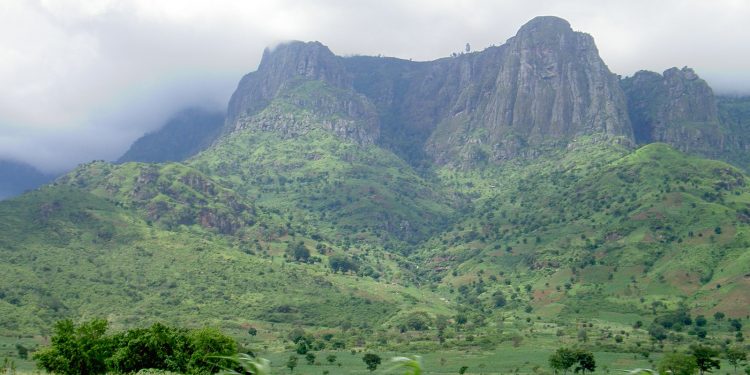York (London): Mountains are home to more than 85 per cent of the world’s amphibian, bird and mammal species. Lowland slopes are rich in animal and plant species.
And rugged, high-elevation environments, although lacking such biological diversity, play a key role in maintaining biodiversity in the wider mountain catchment area.
The variation in mountain ecosystems also allows humans to extract multiple benefits from them. These include food, building materials, water, carbon storage, agricultural pasture and nutrient cycling.
Yet, vulnerable to both climate change and human intervention, mountain biodiversity is increasingly under threat. Roughly half of the world’s biodiversity hotspots are now located in mountainous regions.
These are areas of the Earth with significant levels of biodiversity but threatened to the extent that up to 70 per cent of the original habitat has been lost.
And high mountain environments are warming faster than the global average. This is accelerating the rate of change in these ecosystems.
Despite this, mountains are largely ignored by attempts to preserve global biodiversity.
The importance of mountains
High mountains receive a lot of rain and experience low rates of evaporation at high elevations. They therefore contain large stores of water as snow and ice which are the foundation for biodiversity in the surrounding catchment.
Seasonal snow melt on Africa’s Mount Kilimanjaro feeds into the swamps of the nearby Amboseli National Park. The park is home to 420 species of bird and 50 large mammal species, including the African elephant.
Due to their steep elevation gradients, mountain environments also consist of many separate habitats.
In temperate latitudes, such as in Europe and North America, these habitats range from coniferous forests at low elevations to rugged terrain on higher ground.
Habitats in tropical mountains instead range from savannas and lowland rainforests to highland “montane” forests at an elevation of 900 metres to 3,300 metres.
Such habitat diversity supports a wide range of plant and animal species across relatively small spatial scales.
Borneo’s lowland rainforests are home to over 15,000 plant species while over 150 mammal species, including orangutans and gibbons, live in Borneo’s montane forests.
Much of this biodiversity is also exclusive to particular mountain environments. Many mountain ecosystems are islands of suitable and isolated habitats.
As a result, they are often home to species characterised by small populations and a limited range.
The Taita thrush, for example, is confined to the forests of southeast Kenya’s Taita Hills. Here, the species is surrounded by arid savanna within which it could not survive.
Vulnerable ecosystems
Snow reflects much of the incoming solar radiation back out to space. But climate change is increasing rates of snow melt, exposing large areas of dark mountain surface to the sun.
This is leading to rising solar absorption rates and significant warming. Research reveals that the Tibetan plateau (often called the third pole) has warmed by 0.16°C–0.36°C per decade on average since the 1950s. But this decadal rate of warming has increased to 0.5°C–0.67°C since the 1980s.
Increased warming in mountain environments will further amplify snow melt and reduce snow accumulation.
Less snow and ice will result in a reduced availability of water downstream in the future, affecting the functioning of habitats in the mountain catchment.
Mountain environments are also vulnerable to human intervention. Mount Kilimanjaro’s fertile volcanic soil has encouraged human habitation of the surrounding area throughout history. But in recent decades, this has accelerated.
For example, agricultural land use in the Upper Pangani catchment to Kilimanjaro’s south expanded from 97,000 hectares in 1987 to over 300,000 hectares by 2017.
The amount of groundwater collected in the mountain’s aquifer decreased by 6.5 per cent over the same period.
Land use change in mountain environments is leading to significant biodiversity loss. The Eastern Arc Mountains of Kenya and Tanzania have lost 95 per cent of their forest cover since 1500, reducing the diversity of unique flora and fauna that are found in the area. The Kihansi spray toad, for example, is now extinct in the wild.
Ignoring mountains
Yet while its clear mountains are important for the ecosystems they support, recognition of these environments from governments and policymakers is insufficient. There is currently no effective international policy in place to protect the biodiversity of mountain environments and there is little cooperation between governments, environmental agencies and conservationists to deliver such a strategy.
Establishing a cost for the services provided by mountain ecosystems would be a step towards reducing their exploitation.
Management of rivers with variable stream flows can be achieved by issuing controllable permits for water use.
Water market reform in southeastern Australia’s Murray-Darling river basin is a successful example.
Landowners and businesses here are able to purchase tradeable water entitlements set to levels that do not compromise the environment.
Since its introduction 30 years ago, this system has improved water quality and has allowed more water to be retained in the river basin. The expanding wetlands are also proving a successful nursery habitat for the native Murray cod and silver perch fish species.
But schemes such as this are open to regulatory challenges and issues over who manages the resource.
Unreliable and inaccurate data on agricultural water and groundwater abstraction also constrain global water management.
Both the recent UN climate change summit (COP27) and UN biodiversity conference (COP15) ended short of ambition over protecting mountain biodiversity. A series of agreements and targets were established with little disclosure of how they will be financed and enforced.
An international treaty that accepts the value of mountain ecosystems and puts measures in place to protect their environmental, economic and biological importance is urgently required.
By Rob MarchantProfessor of Tropical Ecology, University of York
-The Conversation







































